Johan Arnt or Johan-Arnt is not a very common name in Norway today, and only about 100 guys are currently bearers of this name. According to name reseracher Ivar Utne this name is almost exclusively used in the Trøndelag region, usually not elsewhere in Norway. One thing is for sure, there were a whole bunch of Johan-Arnts on the Eide farm(s) in the 19th century. It is very easy to get the different Johan-Arnts mixed up.
Johan Arnt is thus a common name in Norway and especially in Trøndelag in those days, and some name researchers invoke reference to the great German theologist Johan Arendt. On the Eide farm however I guess it is more relevant that Jon and Arnt are both common names in the family upon their arrival to the village, and if you want to combine these two names into one, both Arnt-Jon and Jon-Arnt are impossible to pronounce. But if you insert a tiny syllable HA into Jon, Johan-Arnt becomes a rather pronouncable name. At least to people in Trøndelag.
Jon Arntsen Føll from Rissa, who bought the farm in 1801, had three children, and he split the Eide farm between these three. Since there were one boy and two girls, and since a brother's part is also the lion's share (i.e. twice as big as the sister part), the farm was split into two equal parts first (west farm and east farm) with the dividing line following the creek Eidselva. While the son (whose name was also Jon) got the "east farm", the two daughters Anne and Beret had to split the remaining half, west farm, between them.
Of course this is not accurate, since both of the sisters were married and therefore, in reality, their husbands had one quarter each of the original farm.
The son, Jon Jonsen, married Ingeborg and had nine children, five boys and four girls. Two of the sons (Anders and Gabriel) drowned as young men, in 1857, while partaking in a fishing fleet outside the island of Smøla. Then there are the four daughters (Sigrid, Marit, Anne and Johanna) and three sons left; Bengt, Hans (the youngest), and the eldest son Johan Arnt.
Johan Arnt is not only the eldest son, he is senior to all his sibilings, as he was born in 1811. However, as his father Jon Jonsen wants to hand the farm over to his children in 1861, there is no mention that Johan Arnt receives any part of the farm. Whereas Bengt gets the lands north of the creek and builds himself a house on Hare Hill, the youngest son, Hans, ends up inheriting the main farm on Eide. The daughters, or rather, the sons-in-law, are also allowed some appropriate pieces of land. But Johan Arnt, now fifty years old, evidently ended up inheriting nothing.
It seems that Johan Arnt rather early got tired of waiting to take over his father's farm, because already twenty years before this he bought the neighbouring farm on Eide (Midtigården, the middle farm) from his aunt Anne Jonsdatter Eide (who was a widow at this point and therefore got to decide for herself what to do with her land). So maybe Johan Arnt's father reckoned that Johan Arnt was already living comfortably. Another possible explanation is a conflict between father and son. We will probably never know.
What we do know, is that Johan Arnt never got to take over his father's farm, although he was the eldest son. Instead, as mentioned, he bought the neighbouring farm, married Helene who died in childbirth, remarried, this time to Anne Margrete and had seven children by her, i.a. Gabriel, who was the fourth of these seven children.
Hans, the youngest son who took over the main farm, had three children by his wife Beret (again, quite confusing that so many people had the same name, but I promise, he did not marry his aunt). Two daughters, Johanna and Gurina, and the eldest son, Johan Arnt. Oh yes, again Johan Arnt is the name of the eldest son.
Johan Arnt the second must have been quite awaited, since he had his own decorated bed ("Skuvseng") when he was two years old. Alternatively, we have dechiffered the text wrong and this is really Johan Arnt the first's bed, but the letters seem to spell J. A. H. S. E (Johan Arnt Hans’ Sønn Eide), not J. A. J. S. E (Johan Arnt Jons Sønn Eide). Otherwise the bed would have been better suited to the first Johan Arnt, timewise.
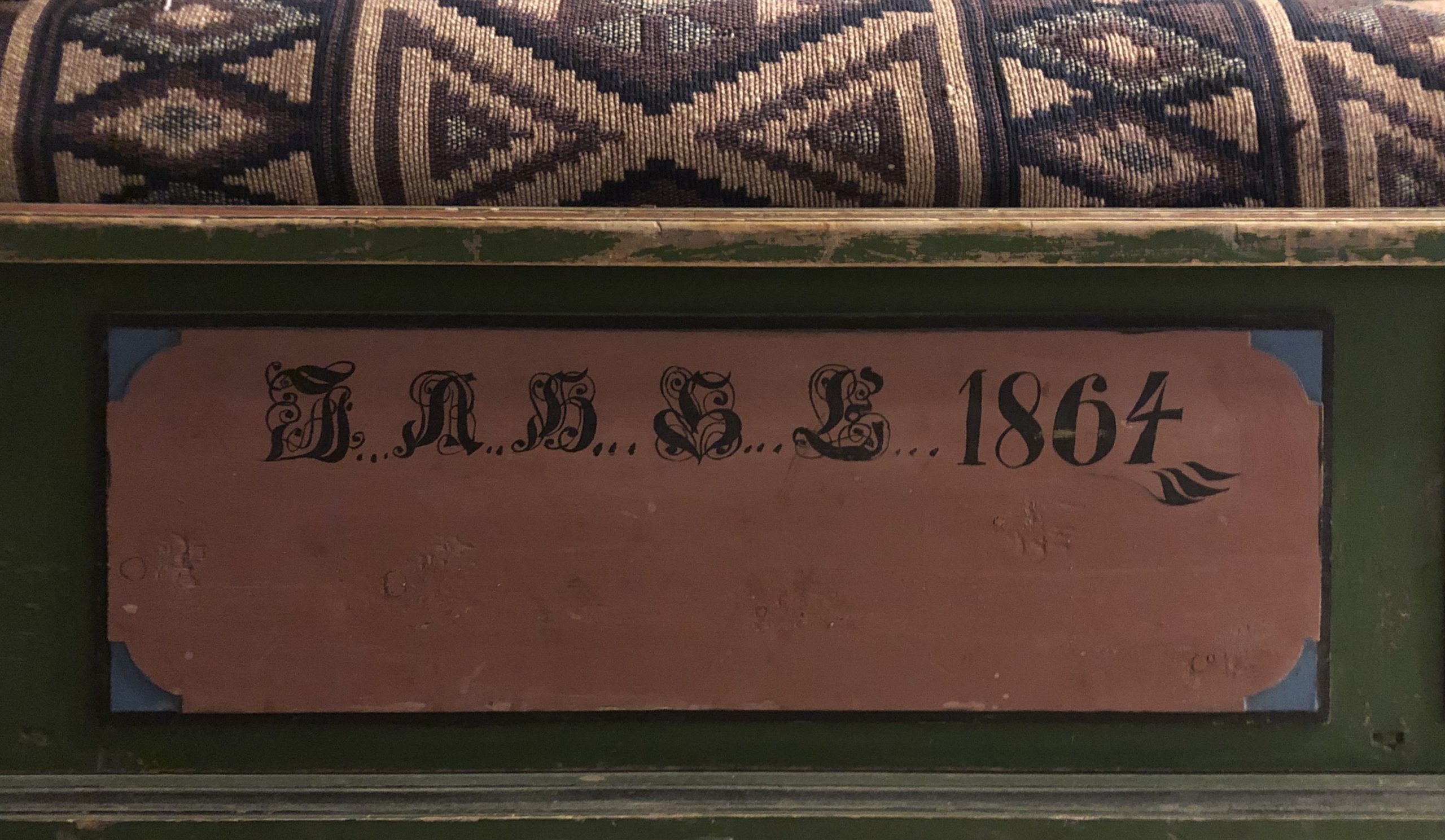
Johan Arnt the second dies when he is 21 (1862 - 1883). So this Johan Arnt also never gets to take over the farm. His sister Johanna instead takes over the farm, after marrying Gabriel next door. This means that even though the first Johan Arnt never got to take over his father's farm, at least his son Gabriel becomes the rightful owner of the farm from 1897 to 1925, when the next generation is ready to step up.
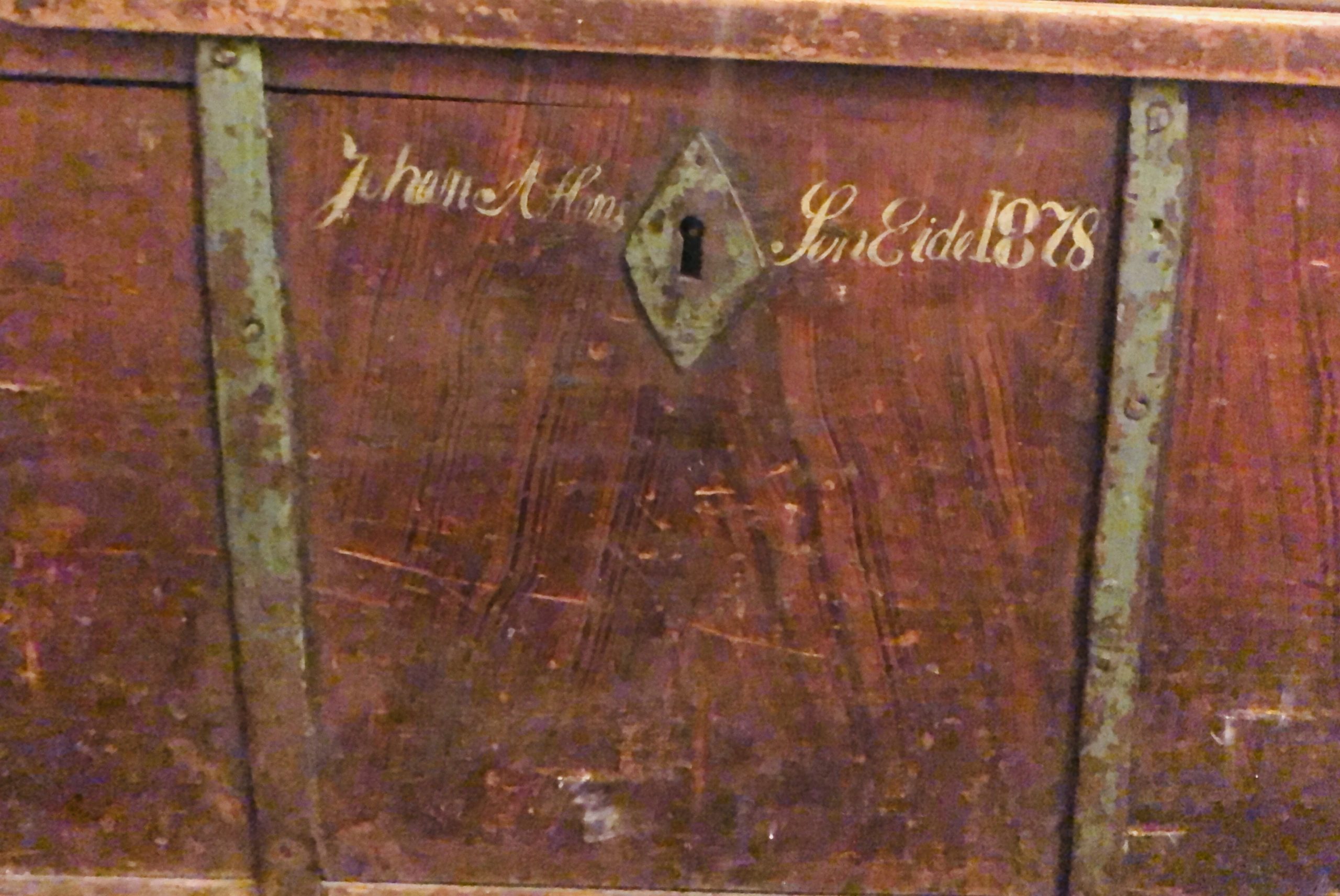
And what is the next generation? Lo and behold, Gabriel follows the tradition and names his firstborn son Johan Arnt. He also has two daughters (Anna Margrete and Helga Marie) and another son, Hans, who is the youngest of the four siblings. Hans is born in 1899 and loses his mother in 1902, when Johanna dies. The father marries again two years later, to money, as the rumers will have it, to Margrete Riber. There is somewhat of a myth in the family and the village about the "Ribe-money", evidently an bottomless treasure. Unfortunately, we have not been able to locate this treasure, but we will certainly keep you posted.
Johan Arnt is born in 1890 and is thus fourteen years old when the father remarries, and Hans is five. One can easily imagine that Margrete establishes a close and warm relationship with the little Hans, whereas Johan Arnt probably is like most teenagers: a lot harder to get close to. When Johan Arnt is old enough, twenty years or so, he leaves for the US to earn money to buy his father'a farm. In those days the American salaries are about four times the Norwegian ones, even though Norway too experiences much improved living conditions. Johan Arnt works at different factories, among others, a saw mill, but he also serves as a volunteer in the American army.
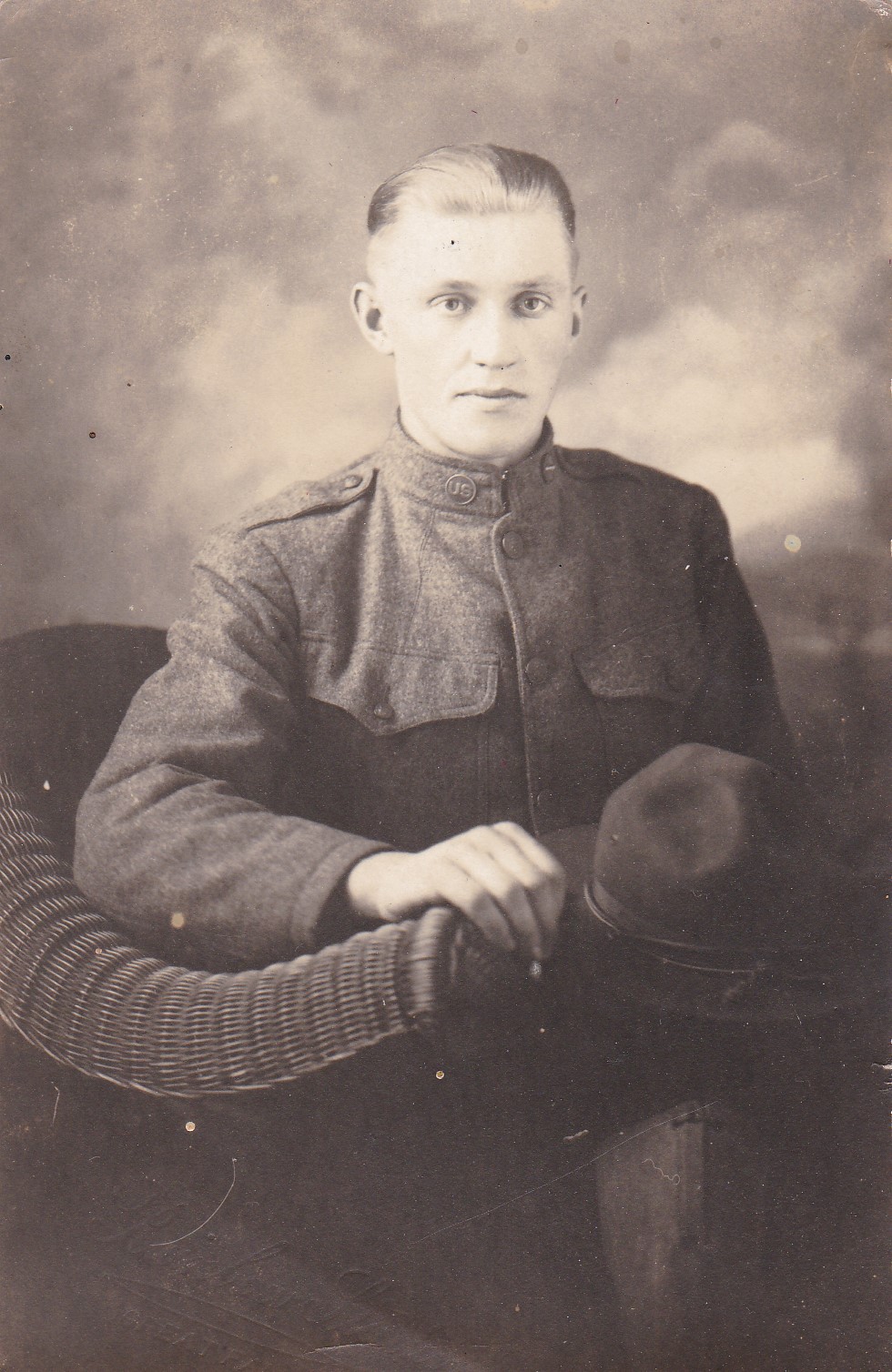
This is a picture of Johan Arnt in his uniform, at the point of his writing he is already out of the army and "has his old position back". On the back of this picture (that we happened to find in the attic in "kårstua") there is no date or year, but it is quite obvious that the young boy is dreadfully homesick and misses his family.
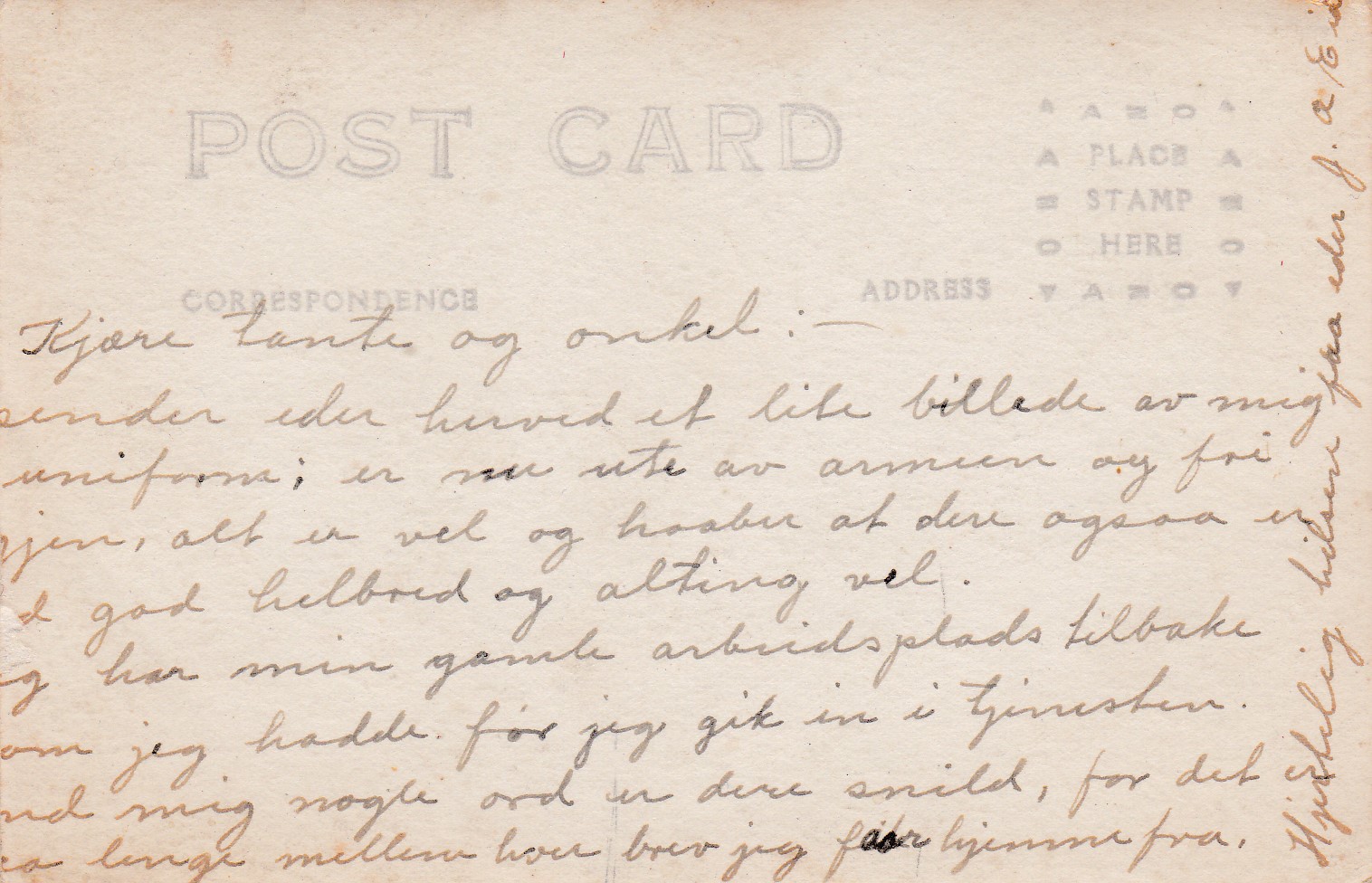
Poor Johan Arnt, he writes home to his aunt and uncle and begs them to send him a few words. He rarely ever hears anything from home.
In America Johan Arnt eventually meets the beatiful Gunhild and marries her. Now is the time to return to Norway to take over his farm. But this is easier said than done.
In the family's chronicles Margrete, the stepmother, is responsible for putting a stop to Johan Arnt's plan. Johan Arnt is adviced to go back to his new homeland, the young Hans is the one who should and will inherit the farm (notice how history repeats itself). The young bride, Gunhild, spends the entire stay in her tiny room upstairs, crying her eyes out. The young couple feels extremely unwelcome, and after a short while they return to the US.
Gunhild and Johan Arnt have two children, Asbjørn Gabriel (Osborne) and Olga Johanna. Johan Arnt revisits Eide a few times and during his stays he spends his days fishing, preferably in solitude, on the beautiful fjord. He dies in 1972, and after this we hear little and nothing from his family. Until 1984, when we suddenly find an advertisment in the newspaper Adressa, from Olga's daughter Kristen. However, this is a story for later.
It seems that the tradition of naming the eldest son on the Eide farm Johan Arnt does not bring very much luck in the enterprise of actually getting to take over the farm. Instead the youngest sibling, Hans, takes over the farm in two cases, while Johan Arnt the second dies as a young boy.
In the generations after this one has evaded this destiny by naming the eldest boy something entirely different: Gudmund, Hans and Jon Gunnar. And for these three generations, the eldest boy has taken over and run the farm, in a timely and orderly fashion.
Sources:
Gudmund Eide (1995): Gårdshistorie (with the help of Tor Eide).
Einar Eide's recent research into the farm's history
http://www.aftenposteninnsikt.no/7-juli-og-august-2012/det-norske-amerika
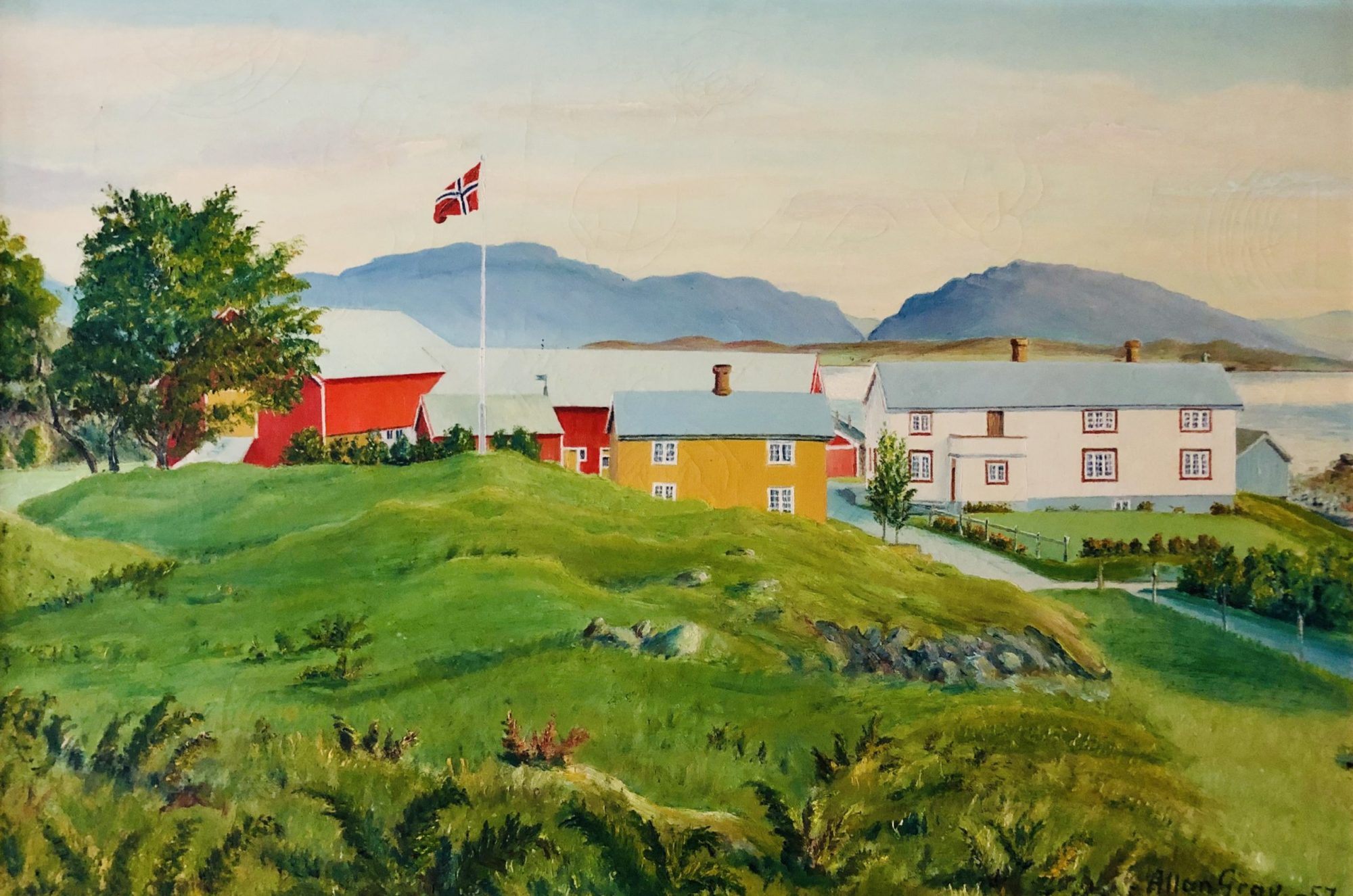
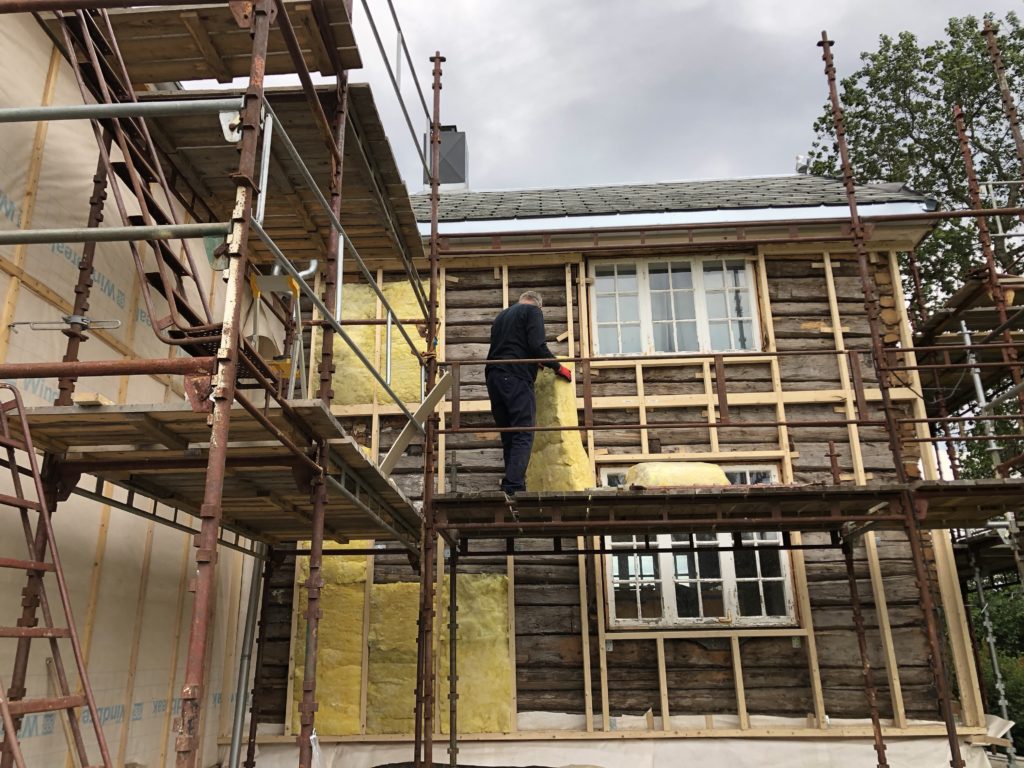

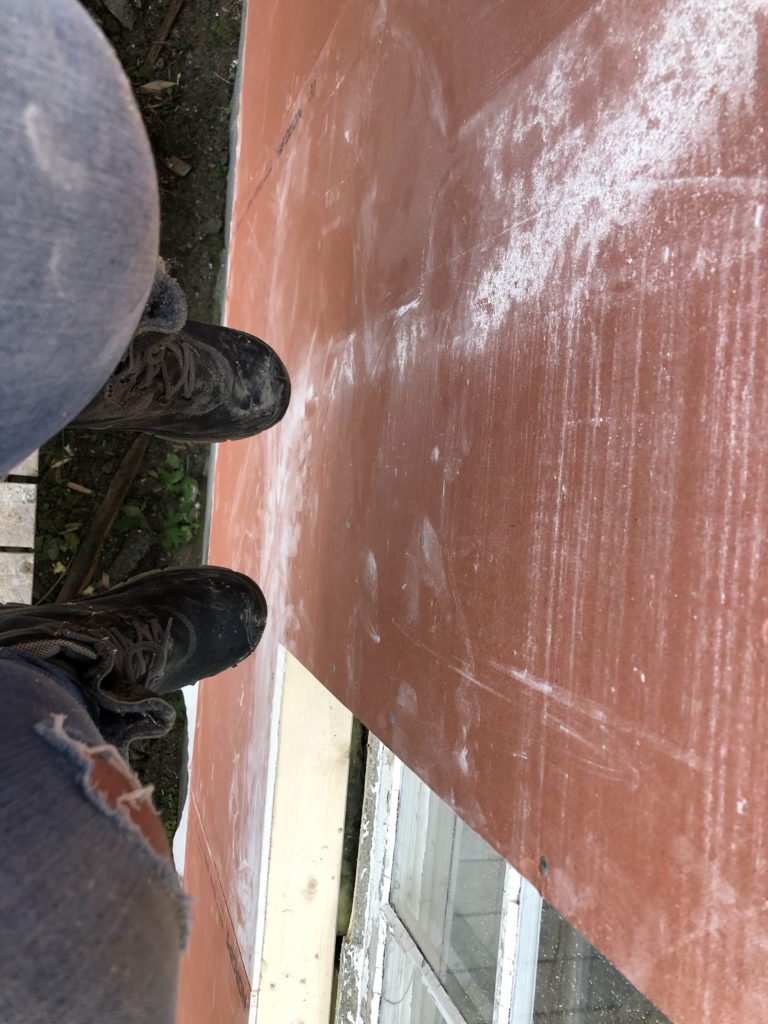
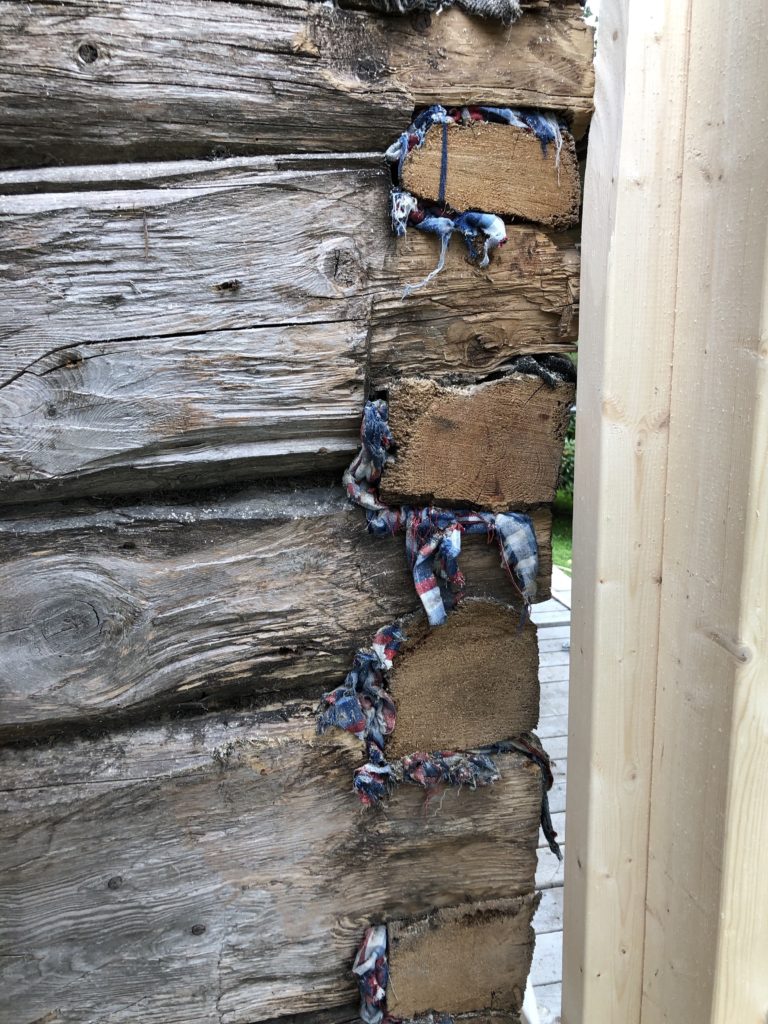
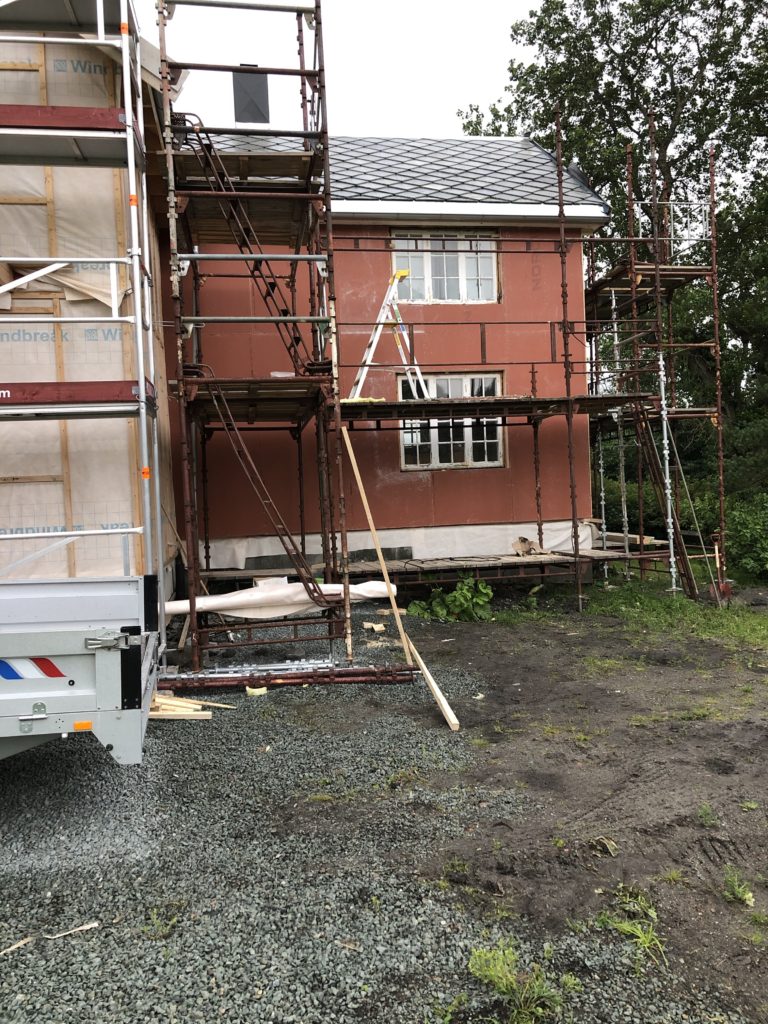
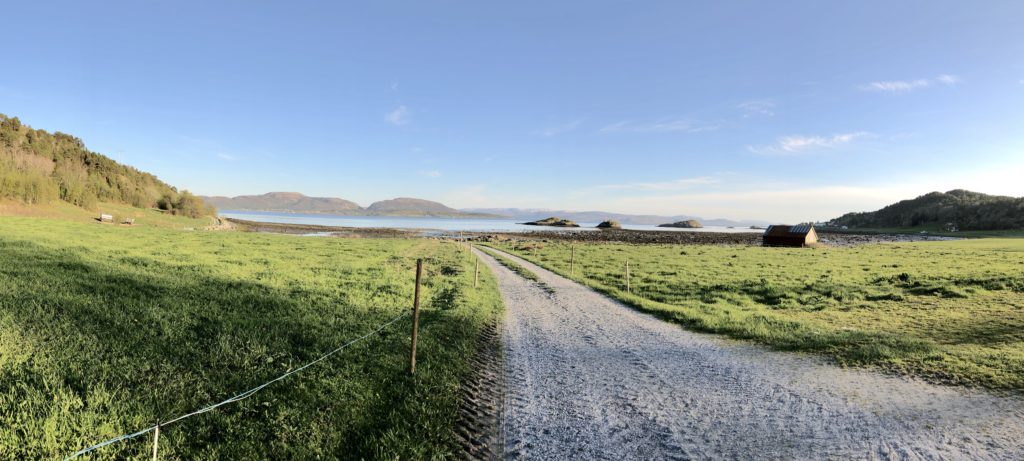
Hei Kristin. Så koselig å få svar fra deg. Jeg har en plan om å få tatt turen til Høybakken…